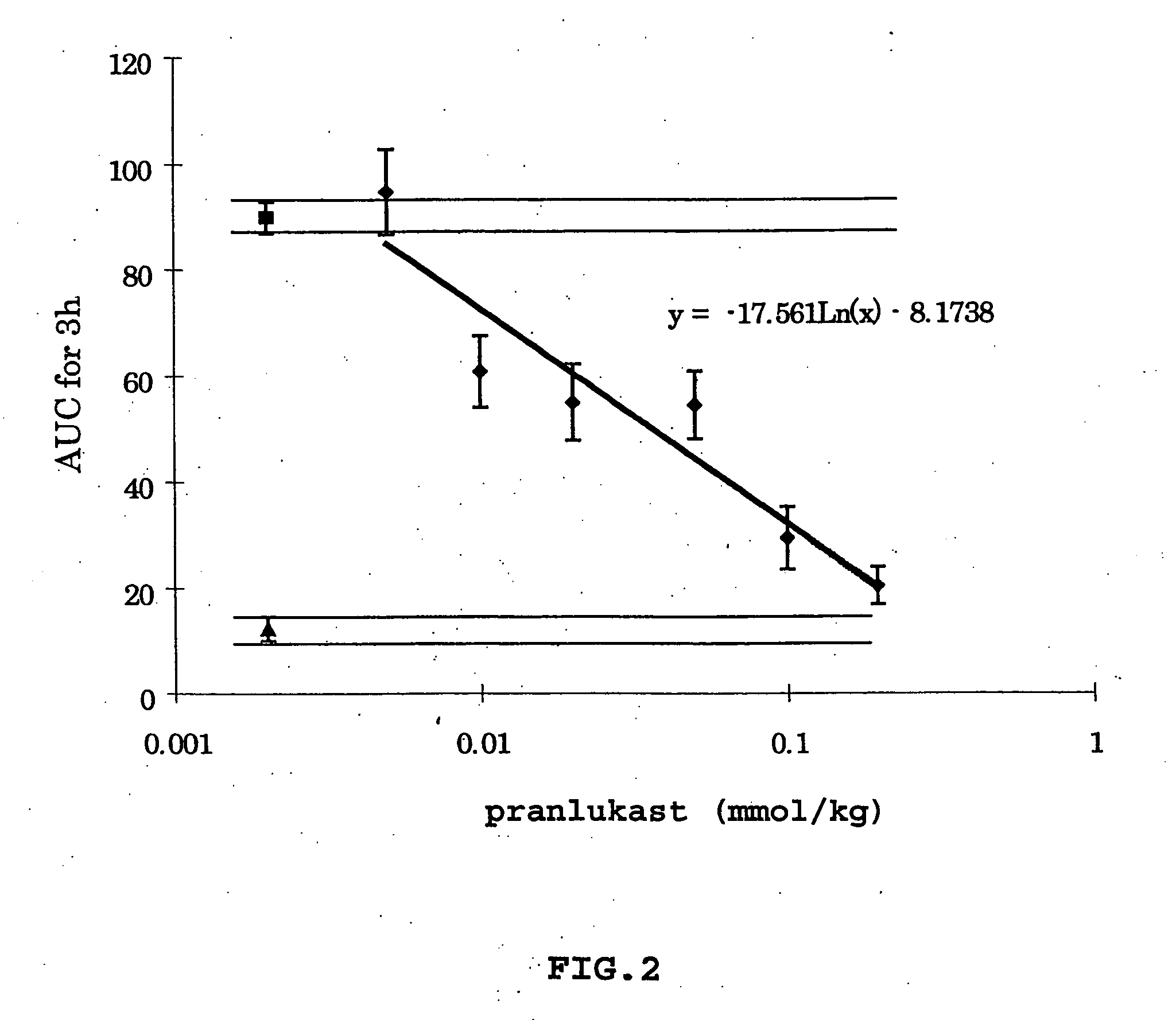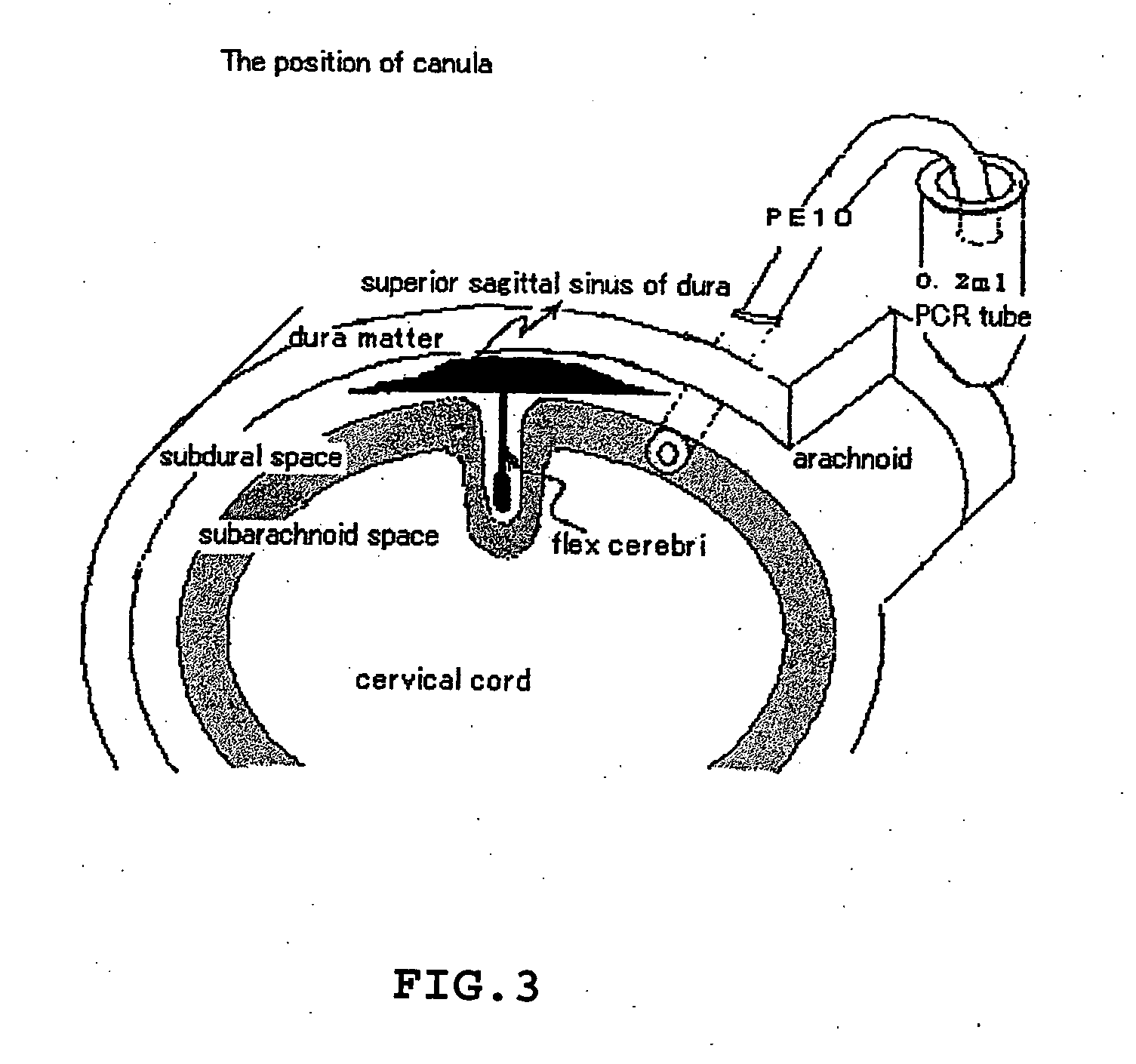Method of treating or inhibiting the development of brain inflammation and sepsis
a brain inflammation and sepsis technology, applied in the field of methods, can solve the problems of kidney failure, electrolyte disturbance, human misery, etc., and achieve the effect of inhibiting the expression of p-selectin and reducing the number of sepsis cells
- Summary
- Abstract
- Description
- Claims
- Application Information
AI Technical Summary
Benefits of technology
Problems solved by technology
Method used
Image
Examples
example 2
Measurement of Changes in the Inflammatory Process
[0095] To investigate the role of leukotriene antagonists in the treatment of sepsis, a sensitive and quantitative method to measure inflammation for the central nervous system was developed. Important changes in the inflammatory process can be monitored, as both the permeability of BBB and the infiltration of white blood cells (WBC) to cerebrospinal fluid (CSF) caused by arachidonic acid can be measured over time from the same experimental animal. In particular, the effect of the leukotriene C.sub.4 and D.sub.4 antagonist, pranlukast, was studied using this method. Changes in the inflammatory process of both the permeability of BBB and the infiltration of white blood cells (WBC) caused by administering arachidonic acid as a nociceptive stimulus were observed.
[0096] Materials and Methods
[0097] Male rats, approximately 350-400 g, were anesthetized with sodium pentobarbital at a dose of 50 mg / kg intraperitoneally (i.p.). Animals were t...
example 3
Studies of the Effects of the Leukotriene Receptor Antagonist, Pranlukast
[0105] Evaluation of the Increases of the Permeability of Endothelial Cells in the Brain Capillaries and WBC Infiltration to the CSF During Sepsis
[0106] Using the above-described method, it is possible to measure the changes in permeability over time in the same animal. No other method has been able to measure sepsis and inflammation over time using the same animals, and as a result, it has been necessary to sacrifice at least four animals (to attain statistical significance) at certain time periods. For example, if it is necessary to investigate the process of sepsis every thirty minutes for ten hours (n=4 for every thirty minutes), then 80 rats would need to be sacrificed. It is important to note that this method provides information not only regarding the changes in permeability of the brain capillaries, but also regarding changes in the infiltration of WBC into the CNS.
[0107] To obtain data on WBC infiltrat...
example 4
Effect of Pranlukast and Other Anti-Inflammatory Drugs on Models of Traumatic Brain Injury in the Rat
[0117] Pre-treatment of pranlukast has been found to result in longer survival in a rat ischemia model using a reversible 30 minute occlusion of both carotid arteries followed by reperfusion. One of 4-5 rats survived for one week when pranlukast (450 mg / kg i.p.) was administered 30 minutes before the occlusion.
[0118] Additionally, increased infiltration of WBC into the CSF caused by interleukin-6 were inhibited by pretreatment of pranlukast (administered at three different doses) in the intact dog.
[0119] It has now been discovered by the present inventor that the leukotriene C4 and D4 antagonist, pranlukast (450 mg / kg.
[0120] i.p.), completely inhibits inflammation caused by arachidonic acid (3.25 .mu.g / 2 .mu.l). This inflammation is the basis of increased permeability of the BBB and infiltration of WBC into the CSF. Therefore, the leukotriene C4 and D4 antagonist (pranlukast) is usef...
PUM
| Property | Measurement | Unit |
|---|---|---|
| molecular weight | aaaaa | aaaaa |
| body temperature | aaaaa | aaaaa |
| body temperature | aaaaa | aaaaa |
Abstract
Description
Claims
Application Information
 Login to View More
Login to View More - R&D
- Intellectual Property
- Life Sciences
- Materials
- Tech Scout
- Unparalleled Data Quality
- Higher Quality Content
- 60% Fewer Hallucinations
Browse by: Latest US Patents, China's latest patents, Technical Efficacy Thesaurus, Application Domain, Technology Topic, Popular Technical Reports.
© 2025 PatSnap. All rights reserved.Legal|Privacy policy|Modern Slavery Act Transparency Statement|Sitemap|About US| Contact US: help@patsnap.com



